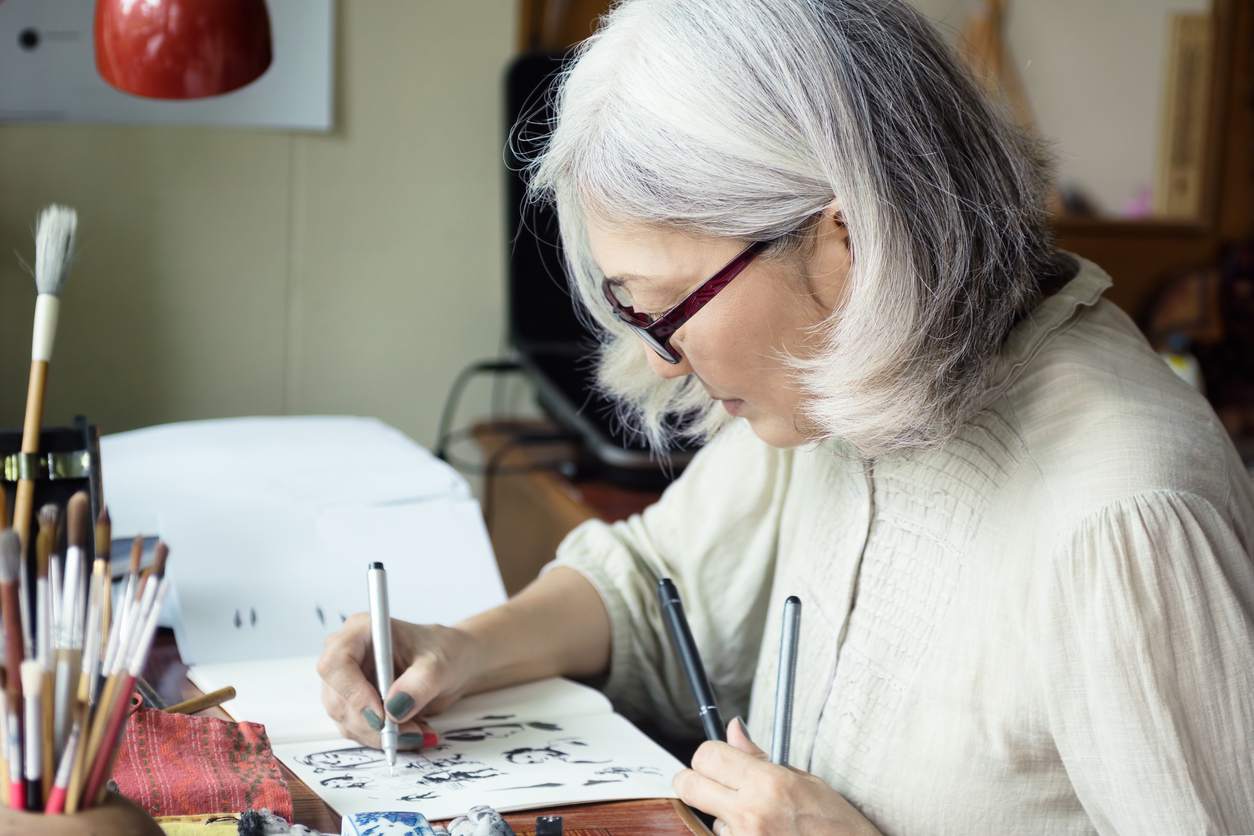
When my mother’s forgetting was detectable, I began to lead a variety writing workshop for individuals with mild to moderate cognitive impairment. For an hour, my partner and I read poetry to the participants, based on a particular theme. We used songs, props and food to also mirror the theme. Think along the lines of “Take Me Out to the Ballgame.” The idea was to place participants in a setting where they could be immersed in a subject matter and synthesize the use of their senses. Then, we wrote on that topic.
From this workshop, the idea grew. We extended this offering to caregivers as well.
The growth of dementia programs and the arts continues at a rapid pace, as scientists become more knowledgeable about what impact the arts have on our well-being, and as society acknowledges that same impact on those for whom we care and our care partners.
Music and Memory Programs
The documentary Alive Inside, filmed in 2014, was one of the first artistic endeavors to share with the public individuals with memory loss and how they experience a movement inside of themselves too. The goal of the film was to demonstrate ways in which music stays with us even when memory has dissipated. Social worker Dan Cohen, through his nonprofit organization Music and Memory, advocated for the use of music therapy with dementia patients.
Many care centers went on to adopt similar programs and create something new.
At the University of Cincinnati, researchers recently expanded upon this premise by also including caregivers in the journey. They developed a course, “Dementia and the Arts” through UC’s College of Medicine and the College-Conservatory of Music (CCM). Stefan Fiol, PhD, had taught a class on social memory but wanted to go deeper. Connecting with neurologist Rhonna Shatz, DO, in the College of Medicine, they decided to partner.
As described on the University’s website, “The class quickly morphed into a service-learning course where a quartet made up of one medical student, one CCM student, a person with cognitive impairment and a family member meet for eight weekly sessions each semester.”
Joined by local music therapists, Shatz and Fiol encouraged students to write and reflect on these experiences. Not only was the goal to induce some happiness into the lives of those with impairment and their care partners, but also to break down barriers between generations, and explore various means for all be seen as equals in one setting. In other words, to be seen as human.
The National Institutes of Health took it upon itself to review the meaning of arts in the lives of those who partner in our care through a look at dance, visual arts, and music. In their study, they conclude, “measurement may seem irrelevant because the experience of art changes us without much use of our rational faculties.” They also found, “meta-reviews of psychosocial interventions are beginning to place arts interventions on a par with other non-pharmacological approaches to alleviate certain behavioural symptoms of dementia, such as agitation and apathy.”
Arts Programs
In Ohio, at another university, aging and the arts has been studied widely and put into practice through a program titled, “Opening Minds through Art (OMA).” First begun in Miami University’s Scripps Gerontology Center in Oxford, Ohio, the program focuses on person-centered care. Students and facilitators are trained, and then paired with elders, to create art. The result is a reminder that we all contain multitudes of vitality within us. It’s a matter of dedicated time and resources that allows us to continue to share that vitality in whatever form is possible with the rest of the world.
Many museums have also tapped into this vein. To reach elders through art, they host programs with specifically trained docents who can lead care partners together through a series of artworks and later prompt reflection and discussion on the subject matter. Whether they offer art therapy programs or meetups like at Museum of Metropolitan Art in New York’s Meet Me at MOMA to bolster conversations in an interactive setting, institutions have taken notice and are using their resources as a source for good.
As for writing programs, colleagues and I continue to offer special programming for individuals and their care partners in settings that are safe and supportive. Many participants suffered years ago at the hands of a less-informed English teacher who told them, you can’t write. We lead by example and impress upon participants that everyone can write.
We all have stories inside of us, waiting to come out.